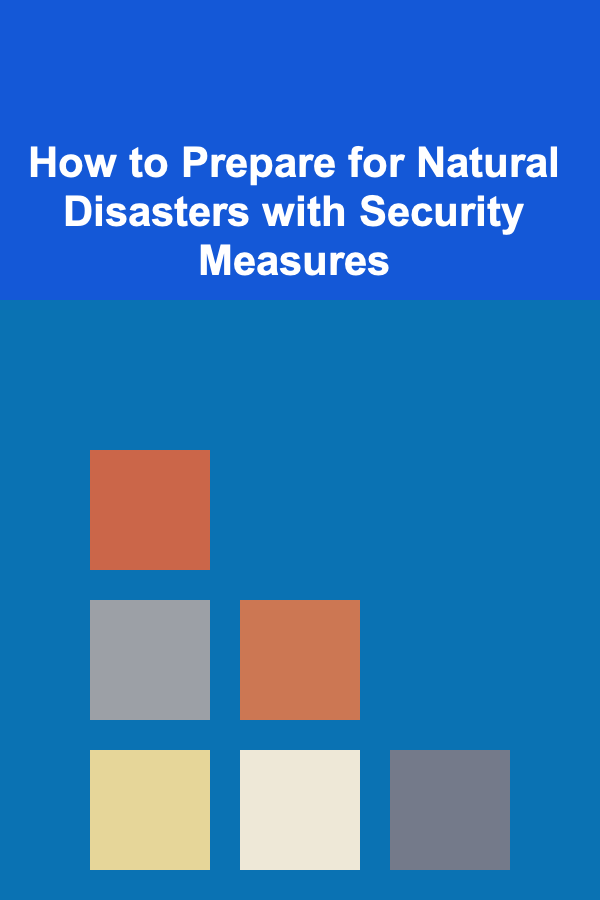
How To Interpret Blockchain Security Best Practices
ebook include PDF & Audio bundle (Micro Guide)
$12.99$5.99
Limited Time Offer! Order within the next:

Blockchain technology, since its inception with Bitcoin in 2008, has evolved into a major force in the digital world, impacting industries such as finance, healthcare, supply chain management, and more. Its decentralized and distributed nature provides significant advantages in terms of security, transparency, and immutability. However, the very attributes that make blockchain powerful also present unique challenges, especially when it comes to securing blockchain networks and their applications.
As blockchain adoption grows, understanding how to interpret and implement security best practices is essential for developers, businesses, and users who rely on this technology. This article will explore the best practices for blockchain security, addressing both general principles and specific strategies for securing blockchain networks, applications, and transactions. By the end, readers will have a comprehensive understanding of how to maintain a secure blockchain environment.
The Basics of Blockchain Security
Before diving into security best practices, it's important to grasp the fundamentals of blockchain technology. A blockchain is a decentralized digital ledger where transactions are recorded in blocks, and each block is linked (or chained) to the previous one. This structure provides a high level of data integrity and immutability, making it difficult for any single party to alter the history of transactions once they have been recorded.
Blockchain security focuses on safeguarding the integrity, confidentiality, and availability of this decentralized system. The goal is to protect against various threats, such as data tampering, unauthorized access, and attacks on the network itself.
Some key components that contribute to blockchain security include:
- Cryptography: Blockchain relies heavily on cryptographic techniques, such as hashing, public-private key pairs, and digital signatures, to ensure the security of data.
- Consensus Mechanisms: These are protocols that validate and agree on the transactions added to the blockchain. Examples include Proof of Work (PoW), Proof of Stake (PoS), and Delegated Proof of Stake (DPoS).
- Decentralization: Blockchain is designed to be decentralized, meaning that no single entity has control over the entire network, which enhances its resilience to attacks.
With these components in mind, let's explore the best practices for securing a blockchain system.
Implement Robust Cryptographic Techniques
Hash Functions
One of the core security features of blockchain is the use of cryptographic hash functions. These are mathematical algorithms that take input data and return a fixed-size string, which is a hash. This hash acts as a unique fingerprint for the input data.
In blockchain, hash functions are used to link blocks and ensure that each block is tamper-proof. If someone attempts to alter the data in a block, the hash will change, breaking the chain and signaling that the integrity of the data has been compromised.
To ensure that blockchain security remains strong, it's critical to:
- Use strong and well-established hash algorithms like SHA-256 (used in Bitcoin) or Keccak-256 (used in Ethereum).
- Regularly audit cryptographic implementations to ensure they are resistant to attacks such as collision attacks (where two different inputs produce the same hash).
Public-Private Key Pair Authentication
Blockchain systems often rely on public-key cryptography, where each user or entity has a public key and a private key. The public key is shared with others, while the private key is kept secret. Transactions are signed using the private key, and the recipient can verify the authenticity of the transaction using the sender's public key.
Best practices in public-private key management include:
- Key Management: Keys should be securely stored, preferably in hardware wallets or secure vaults, rather than being stored in plain text on a user's device.
- Key Rotation: Regularly changing cryptographic keys can reduce the impact of a potential key compromise.
- Multi-Signature Transactions: Implementing multi-signature wallets can increase the security of transactions, as they require multiple keys to authorize a transfer.
Digital Signatures
Digital signatures ensure that transactions are authentic and have not been tampered with during transmission. Blockchain systems use digital signatures to verify that a transaction was initiated by the rightful owner of the private key.
To maintain security, ensure that:
- Private keys used for digital signatures are not shared or exposed to unauthorized parties.
- Digital signature algorithms, such as ECDSA (Elliptic Curve Digital Signature Algorithm), are implemented properly.
Protect the Network from Attacks
While blockchain itself is resistant to many attacks due to its decentralized nature, the surrounding infrastructure (such as nodes, wallets, and exchanges) is still vulnerable to traditional cyber threats. It is crucial to protect the network from attacks like Distributed Denial of Service (DDoS), Sybil attacks, and 51% attacks.
Preventing DDoS Attacks
A DDoS attack aims to overwhelm a network with a flood of traffic, making it unavailable to legitimate users. Blockchain nodes are susceptible to such attacks, which can disrupt the network and lead to potential vulnerabilities.
To prevent DDoS attacks:
- Rate Limiting: Implement rate-limiting techniques to control the amount of traffic a node can handle within a certain period.
- Traffic Filtering: Use firewalls and other filtering mechanisms to block malicious traffic.
- Distributed Nodes: Ensure that blockchain nodes are distributed across multiple locations and that they have sufficient resources to handle high traffic loads.
Securing Consensus Mechanisms
Consensus mechanisms are the foundation of blockchain security, as they determine how transactions are validated and added to the blockchain. A flaw in the consensus mechanism can allow bad actors to manipulate the blockchain, leading to a 51% attack or double-spending attacks.
To secure the consensus mechanism:
- Decentralized Control: Avoid concentration of power in the hands of a few participants. This can prevent malicious actors from gaining control over the consensus process.
- Network Monitoring: Continuously monitor the health and performance of the consensus network to detect anomalies that might indicate potential attacks.
- Cryptographic Proofs: In Proof of Work (PoW) systems, ensure that the cryptographic difficulty is adjusted to make it computationally infeasible for attackers to control the majority of the network hash rate.
Avoiding Sybil Attacks
A Sybil attack occurs when an attacker creates multiple fake identities in order to take control of the network. This can be particularly dangerous in permissionless blockchains, where anyone can participate in the network.
To prevent Sybil attacks:
- Proof of Identity: Implement identity verification systems to ensure that each participant is unique.
- Reputation Systems: Use reputation mechanisms to assess the trustworthiness of participants and prevent malicious actors from flooding the network.
Secure Blockchain Applications and Smart Contracts
Code Audits
Smart contracts are self-executing contracts with the terms of the agreement directly written into code. They are a powerful tool in blockchain applications, but their code can be vulnerable to bugs and exploits. A vulnerability in a smart contract could lead to substantial financial losses or data breaches.
To secure smart contracts:
- Auditing: Regularly audit smart contract code for vulnerabilities, especially common issues such as reentrancy attacks, overflow/underflow bugs, and improper access control.
- Formal Verification: Use formal verification techniques to mathematically prove that the smart contract behaves as expected under all possible conditions.
- Bug Bounties: Offer rewards for ethical hackers who discover vulnerabilities in smart contract code before they can be exploited.
Decentralized Application (DApp) Security
DApps (Decentralized Applications) interact with blockchain networks and smart contracts. Ensuring the security of DApps is critical to the overall security of the blockchain ecosystem.
To secure DApps:
- Front-End Security: Ensure that the DApp's front-end is protected against common vulnerabilities, such as cross-site scripting (XSS) and cross-site request forgery (CSRF).
- Backend Security: Implement strong security measures for the backend APIs that interact with the blockchain, ensuring that unauthorized users cannot exploit weaknesses.
- User Education: Educate users about the risks associated with DApps, such as phishing attacks and malware, and encourage the use of secure wallets.
Key Management in DApps
In decentralized applications, users are typically responsible for managing their private keys. If users lose their keys, they may lose access to their funds and assets.
Best practices for key management in DApps include:
- Hardware Wallets: Encourage users to store their private keys in hardware wallets rather than on web-based platforms.
- Seed Phrase Backup: Provide users with an option to securely back up their wallet seed phrases, ensuring they can recover their keys if lost.
- Multi-Signature Wallets: Promote the use of multi-signature wallets to add an additional layer of security.
Data Privacy and Confidentiality
While blockchain's transparency is one of its core features, it can also present challenges in terms of data privacy, especially when it comes to personally identifiable information (PII) or sensitive business data.
To maintain privacy and confidentiality on blockchain:
- Zero-Knowledge Proofs: Implement zero-knowledge proofs (ZKPs) to allow transactions to be verified without revealing any details about the transaction itself. This can enhance privacy while still maintaining the security of the blockchain.
- Off-Chain Storage: Store sensitive data off-chain and use cryptographic methods to reference the data on the blockchain, ensuring that sensitive information is not exposed to public scrutiny.
- Privacy-Preserving Protocols: Explore blockchain networks that are specifically designed for privacy, such as Monero and Zcash, which utilize advanced cryptographic techniques to protect transaction data.
Conclusion
Blockchain security is a multifaceted and evolving discipline. As blockchain technology continues to grow and be adopted by more industries, understanding how to interpret and implement security best practices becomes essential. By focusing on robust cryptographic techniques, securing the network against attacks, safeguarding smart contracts and DApps, and protecting data privacy, we can ensure that blockchain systems remain secure and reliable.
Ultimately, blockchain's promise of a decentralized, transparent, and immutable ledger can only be fully realized when the security of its infrastructure is carefully managed. Implementing these best practices will help developers, businesses, and users navigate the complexities of blockchain security and build trustworthy, resilient systems for the future.

How to Make a Crisis Management Checklist for Recovery and Aftermath
Read More
How to Prepare for Natural Disasters with Security Measures
Read More
How to Stay Up to Date with Local Rental Laws and Regulations
Read More
How to Turn Your Closet Into a Functional Storage Space
Read More
How To Get Better at Euro-Style Board Games
Read More
How To Build a Stronger Skeletal System
Read MoreOther Products

How to Make a Crisis Management Checklist for Recovery and Aftermath
Read More
How to Prepare for Natural Disasters with Security Measures
Read More
How to Stay Up to Date with Local Rental Laws and Regulations
Read More
How to Turn Your Closet Into a Functional Storage Space
Read More
How To Get Better at Euro-Style Board Games
Read More